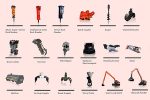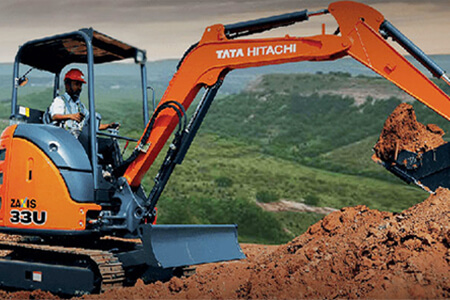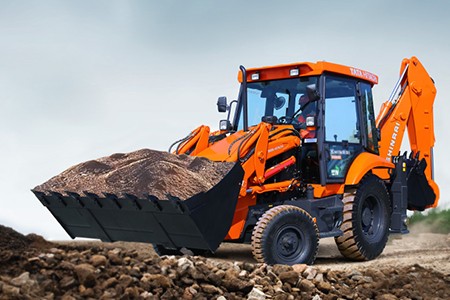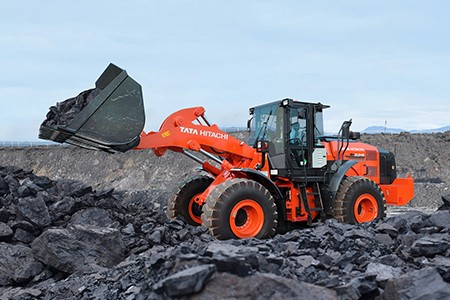Excavator Safety Tips, Operations in Construction Site
 Excavators are robust and versatile machines that play a vital role in construction, mining, and excavation projects. With their hydraulic power and specialized attachments, excavators can perform various tasks, from digging trenches to demolishing structures. This article will discuss excavator operating and key safety tips to create a secure working environment.
Excavators are robust and versatile machines that play a vital role in construction, mining, and excavation projects. With their hydraulic power and specialized attachments, excavators can perform various tasks, from digging trenches to demolishing structures. This article will discuss excavator operating and key safety tips to create a secure working environment.
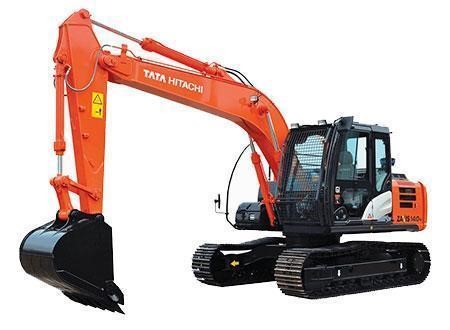
HOW TO OPERATE AN EXCAVATOR
Operating an excavator requires skill, knowledge, and adherence to safety protocols. Here is a detailed explanation for an excavator operator on how to operate an excavator effectively:- Familiarization of Controls: Before operating the excavator, take the time to become familiar with the machine’s controls. These typically include control levers to move the hydraulic arm and bucket, foot pedals for the tracks (crawlers) and various switches for auxiliary functions. Refer to the operator’s manual for the specific layout and functions of the controls on your excavator model.
- Perform Pre-Operational Checks: Before starting the excavator, conduct thorough pre-operational checks. Inspect the machine for any visible damage, leaks, or loose components. Please report any problems or malfunctions immediately and wait to use the machine until it has been given the all-clear validation.
- Cabin Layout and Visibility: To operate the excavator, familiarize yourself with the cabin’s layout and the location of essential controls and instruments. Ensure that all windows are clean and provide clear visibility of the surroundings.
- Starting the Excavator: The excavator’s engine follows the manufacturer’s instructions. Before beginning operations, give the machine some time to warm up. Monitor the engine’s temperature and pressure gauges to ensure they are within the recommended range.
- Controlling the Excavator’s Movements: Use the control levers to manipulate the hydraulic arm and bucket. Familiarize yourself with the controls’ sensitivity and range of motion to achieve precise movements.
- Digging and Excavation: Position the excavator close to the digging area, ensuring stability on level ground. Use the controls to lower the bucket into the ground, applying gradual pressure to break the soil or rocks. Control the arm’s movements to excavate the desired depth and shape the trench or hole as required. Remember to maintain stability by keeping the machine balanced and avoiding excessive movements that could lead to tipping off.
- Lifting and Moving: Position the bucket or the appropriate attachment over the load to lift materials, ensuring proper balance and weight distribution. Use the controls to lift the load slowly, keeping it close to the ground to maintain stability. Move the excavator smoothly and steadily while carrying the load, ensuring clear visibility of the surroundings. Avoid swinging the load excessively, as it can compromise stability and safety.
- Dumping and Loading: When dumping the load, position the bucket or attachment over the desired location and carefully release the material. When loading materials onto trucks or stockpiles, ensure the excavator’s stability and the receiving area. Avoid overloading the bucket or attachment beyond its specified capacity.
SAFETY TIPS FOR EXCAVATOR OPERATION:
Operating an excavator requires strict adherence to safety guidelines. By implementing essential excavator safety tips, excavator operators can maximize productivity while ensuring a secure working environment for themselves and others on the job site. Here are some crucial safety tips to consider:- Operator Training: Ensure that operators receive proper training on excavator operation, including safety procedures, controls, and maintenance. Ongoing training and certification programs can enhance skills and knowledge, ensuring safe and efficient operation.
- Personal Protective Equipment (PPE): Always wear the proper personal protection gear, such as a hard helmet, reflective clothes, etc. PPE helps protect against potential hazards and minimizes the risk of injuries.
- Safe Access: Use the provided steps, handrails, and handholds when entering or exiting the excavator’s cabin. Avoid jumping or climbing on or off the machine, as it can lead to slips, trips, and falls.
- Secure Work Area: Before operating the excavator, ensure the work area is clear of personnel, obstacles, and underground utilities. Mark and identify buried pipes, cables, or infrastructure to prevent accidents and damage.
- Stability and Slopes: Assess the ground conditions before operating the excavator, especially in soft or unstable soil areas. Avoid operating on slopes that exceed the machine’s recommended limits to prevent tipping accidents.
- Bucket and Attachment Safety: Use the excavator’s bucket and attachments within their specified capacity limits. Overloading can compromise stability and lead to accidents. Ensure proper attachment installation and secure all pins and fasteners before operation.
- Safe Distance: Keep bystanders and other workers safe during excavator operations. Use caution when swinging the boom or moving the machine, as the swinging radius can pose a hazard to those nearby.
- Refueling, Maintenance and Inspection: Follow proper procedures for refueling the excavator, including turning off the engine and avoiding smoking or open flames in the vicinity. Adhere to maintenance schedules and perform routine inspections to ensure smooth excavator operations.
- Insurance for Excavator: It is strongly recommended to have insurance coverage for an excavator. This coverage will help mitigate financial losses in accidents, damages to the excavator, third-party injuries or property damage, theft, vandalism, and other unforeseen circumstances. Insurance ensures the equipment is financially protected against potential liabilities and costs arising during its use.
Article Tags:
Recent Articles
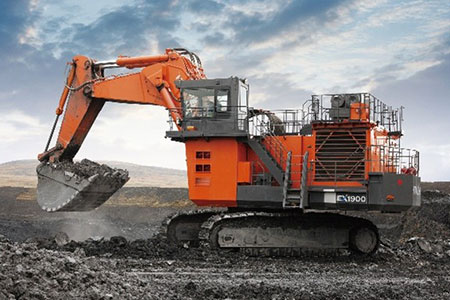
September 10, 2024.
A Comprehensive Guide to Mining Excavators by Tata Hitachi
A Comprehensive Guide to Mining Excavators by Tata Hitachi Having reliable and efficient equipment is essential for maximising productivity andContinue Reading
Read more →
March 28, 2024.
Unearthing the Power of Excavators: A Comprehensive Guide to Types and Applications
Excavator: Types, Specifications, Uses in Construction Site Excavators have revolutionized the construction and mining industries, providing unparalleled efficiency in earthmoving,Continue Reading
Read more →
March 28, 2024.
Enhancing Excavator Efficiency: A Comprehensive Guide to Excavator Attachments
Different Types of Excavator Attachments and Their Uses Excavators are strong equipment used extensively in building, mining, and other sectorsContinue Reading
Read more →

